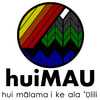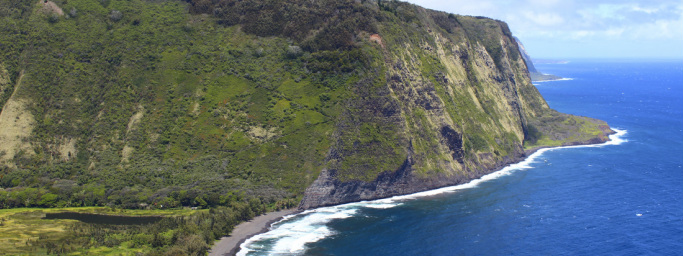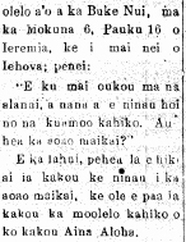A Moʻolelo for ʻUmi: A Famous Aliʻi of These Hawaiian Islands.
Continue Reading the Next Installment!
0 Comments
Why did our kūpuna think it was important to know the moʻolelo of our ʻāina? Why must we continue to pass on these moʻolelo today? The following is an excerpt from an article written in Ka Nai Aupuni on January 17, 1906 by Joseph Mokuohai Poepoe. As the editor of the newspaper,which was owned by Home Rule Party leader, Charles Kahiliaulani Notley, Poepoe was also one of the most prolific ʻŌiwi scholars and authors of the early 20th century. Read his thoughts about the importance of knowing the moʻolelo of your ʻāina ʻōiwi in the article below, featured also on our Moʻolelo ʻĀina page!
In preparation for this presentation, I decided it might be best if I started with talking about the history of Hāmākua through ʻōlelo noʻeau, wise or poetic sayings, passed on to us by our kūpuna. There are many ʻōlelo noʻeau about our ʻāina, and they often describe important observations made by our kūpuna about the nature of a particular ʻāina and the kamaʻāina born of it. The lessons held in ʻōlelo noʻeau, like those held in moʻolelo and mele, are very important for us today, as they teach us how to properly live in balance with our ʻāina and each other.
Our youth, like the buds of the lehua, hold within them the seeds of change for the future generations. While the time I spent with these particular ʻōpio that evening was short, it influenced me greatly. As our hui grows and moves forward with our efforts, I am confident that the youth of Hāmākua will carry on this work with great aloha for our ʻāina and kūpuna. While that night, I may have been the one standing at the front of the room and presenting, it was the ʻōpio who were truly teaching us the important lessons. In sharing that evening together, I learned a great deal about our community. I even learned that the Pāʻauilo Hongwanji, where we gathered that evening, is actually located in the ahupuaʻa of Hauola. I mahalo the ʻōpio, their ʻohana, and all of our ʻohana of huiMAU, and I look forward to sharing more together in the future. ʻO wau iho nō,
Noʻeau Peralto |
Archives
November 2015
Categories |
Mahalo for visiting our Hui Mālama i ke Ala ʻŪlili Website!
Hui Mālama i ke Ala ʻŪlili is a community-based nonprofit organization. Our mission is to re-establish the systems that sustain our community through educational initiatives and ʻāina-centered practices that cultivate abundance, regenerate responsibilities, and promote collective health and well-being.
Hui Mālama i ke Ala ʻŪlili is a community-based nonprofit organization. Our mission is to re-establish the systems that sustain our community through educational initiatives and ʻāina-centered practices that cultivate abundance, regenerate responsibilities, and promote collective health and well-being.





 RSS Feed
RSS Feed